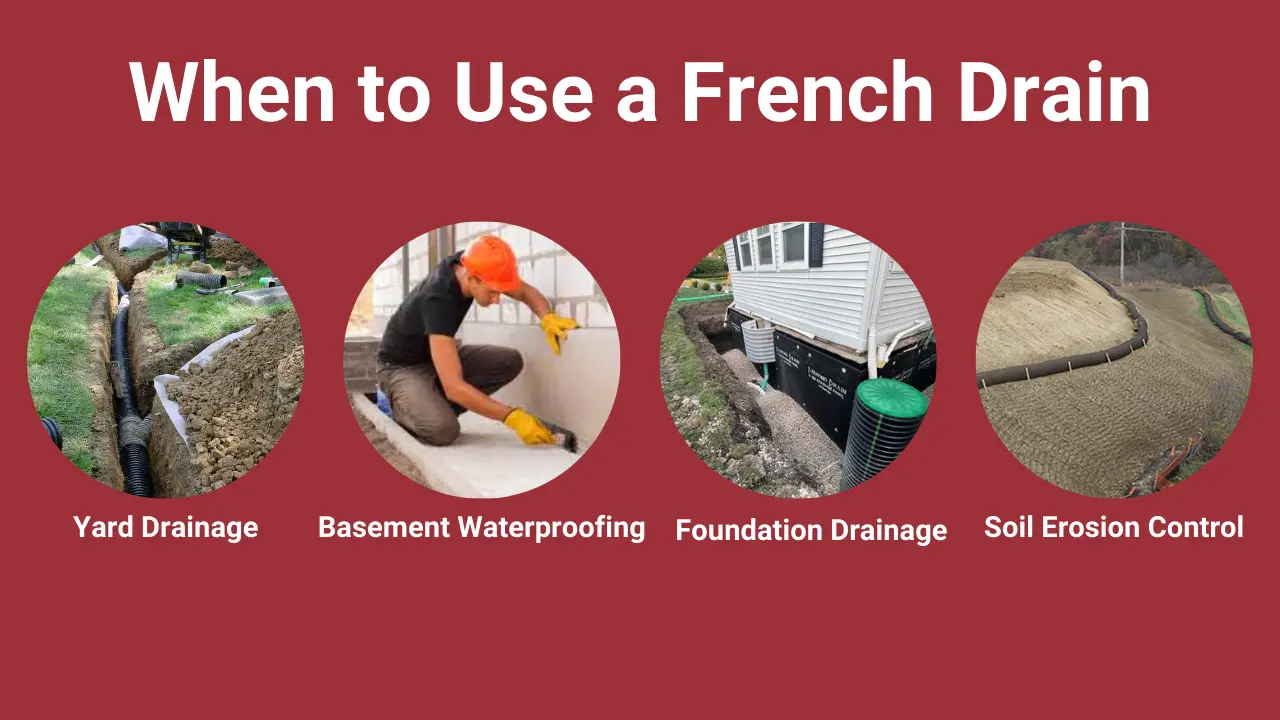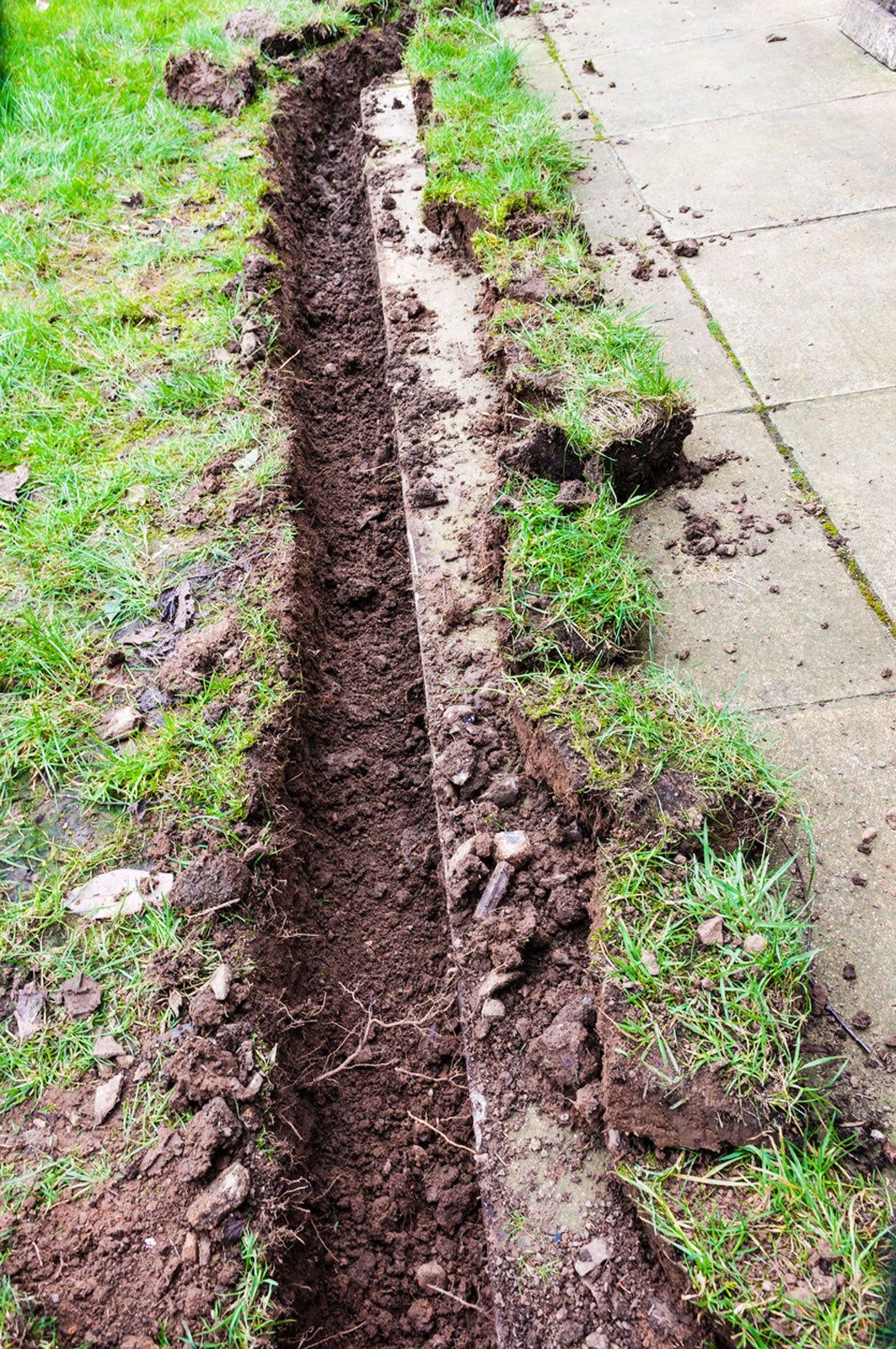Weighing DIY vs. Professional Portland French Drain Construction
Weighing DIY vs. Professional Portland French Drain Construction
Blog Article
The Essential Overview to Preserving Your French Drainpipe for Resilient Performance
Keeping your French drainpipe is crucial to its effectiveness and your building's defense. Normal checks can conserve you from expensive fixings and water damages. You'll wish to know what signs to look for and just how frequently to examine your system. And also, recognizing the cleaning process can make a considerable difference. Let's explore the important steps for guaranteeing your drainpipe works well for years to come.
Recognizing the Function of a French Drainpipe
A French drainpipe is a critical element in taking care of water around your home. It routes excess water away from your foundation, protecting against flooding and damages. When hefty rain falls, the drain accumulates water with a perforated pipeline hidden in gravel. This system enables water to stream openly, lowering stress on your basement wall surfaces and decreasing the threat of leaks.You might question just how it operates in method. As water saturates the soil, gravity draws it toward the drain. The perforated pipeline captures this water, transporting it to an assigned drainage area or tornado sewer. This procedure maintains your yard completely dry and safeguards your home's architectural integrity.Understanding exactly how a French drainpipe features is essential to valuing its significance. By properly carrying water away, it aids maintain a completely dry and secure living setting. So, keeping your French drainpipe in leading condition guarantees you prevent expensive repair services down the line.
Regular Inspections: What to Try to find
Begin by inspecting for any kind of obstructions that could be blocking water circulation when you're inspecting your French drain. Take notice of indications of surface area disintegration around the drainpipe, as this can show possible concerns. Regular assessments will help keep your drainage system working successfully.
Obstructed Drainpipe Analysis
How can you inform if your French drainpipe is blocked? Watch for water merging in your lawn, particularly after hefty rain. If you notice areas where water gathers rather than draining pipes, that's a red flag. You should additionally inspect the drainpipe electrical outlet; if water isn't spurting as it should, there's most likely a blockage. Pay attention for uncommon gurgling audios, which can indicate trapped air. Furthermore, check the drainpipe's surface for any type of plants growth, as origins can obstruct the system and penetrate. If you scent moldy odors, it can aim to stagnant water created by an obstruction. Frequently assessing these indicators can aid you preserve your French drain successfully and avoid pricey fixings.
Surface Area Disintegration Check

Cleansing Your French Drain: Step-by-Step Guide
Cleaning your French drain is crucial for maintaining it working effectively. You'll require some details devices and a clear procedure to assure everything runs efficiently. Allow's go through the steps and suggestions for maintaining your drain effectively.
Tools You'll Require
To deal with the task of cleansing your French drain successfully, you'll wish to collect a few necessary tools. Initially, grab a durable set of handwear covers to secure your hands from particles and sharp things. A little shovel or trowel will aid you eliminate dust or blockages around the drain. For getting rid of out the interior, a plumbing's serpent or a high-pressure water nozzle can be extremely valuable. You'll also need a pail for collecting any particles you draw out. Finally, having a yard hose available will certainly make it less complicated to rinse out the drain and ensure it's moving efficiently. With these devices all set, you'll be set for a detailed cleansing session!
Cleaning Refine Actions
Beginning by assessing the area around your French drain for any visible debris or clogs. Get rid of fallen leaves, branches, or dust that might block water flow. Next, inspect the inlet and outlet areas; clear any obstructions to guarantee appropriate drain. Utilize a garden hose to purge the drainpipe, routing water right into the inlet. This assists dislodge any accumulated sludge or debris. If you discover relentless blockages, consider using a plumbing professional's serpent to break them up. After cleansing, evaluate the crushed rock around the drainpipe; replenish it if it's removed. Verify the drainpipe covers are undamaged and securely in location to avoid debris from going into. Routine cleaning maintains your French drain functioning successfully.
Upkeep Frequency Tips
While regular upkeep is vital for your French drain's durability, recognizing how often to preserve it can make all the distinction. Preferably, you must inspect your French drain at least two times a year, preferably in springtime and loss. After hefty rainfall or snowmelt, check for obstructions or particles. If you notice any kind of standing water, it's time to clean your drain.In locations with heavy foliage, more constant maintenance-- about every three months-- may be necessary. Furthermore, think about cleansing your French drainpipe after major storms or if you observe water merging in your backyard. By remaining proactive, you'll guarantee your French drainpipe functions effectively and protects your building from water damages. Routine checks will conserve you money and time in the future.
Determining Usual Concerns and Their Solutions
It's vital to determine usual concerns with your French drain and carry out efficient services when you see water merging in your backyard or damp spots in your basement. One regular problem is obstructing, often triggered by debris like leaves or debris. To repair this, you can utilize a pipes serpent or a high-pressure water jet to clear blockages.Another problem could be inappropriate incline. Water will not move away from your home if your drainpipe isn't sloped correctly. You can adjust the slope by digging and rearranging the drainpipe pipe.Lastly, check for damages or cracks in the drainpipe itself. If you locate any kind of, changing the harmed sections is necessary for peak efficiency. By resolving these problems promptly, you'll help assure that your French drainpipe remains to function efficiently, shielding your residential or commercial property from water damage and preserving a dry, risk-free atmosphere.
Seasonal Upkeep Tips for Your French Drainpipe
Dealing with common issues with your French drain is simply the very first action in ensuring its long-lasting efficiency. Seasonal upkeep is important for peak efficiency. In the springtime, clear away leaves and particles that may have built up throughout winter season. Examine for any obstructions in the electrical outlet or catch container, as water requires a clear course to stream freely.During summer season, evaluate your drain for any type of indications of moving or working out soil. Make sure it's still level and operating properly. As fall approaches, clean out any dropped leaves to protect against clogs before wintertime arrives.In winter, watch for freezing temperatures. If you stay in a cold climate, ensure your drainpipe isn't in jeopardy of cold. Insulating exposed pipelines can assist. Routine checks and prompt maintenance can stop costly repair work and keep your French drainpipe functioning efficiently year-round. Stay positive and delight in peace of mind understanding your drainage system is in good condition!
When to Contact an Expert
When to call in an expert can save you time and protect against more damages to your French drain, knowing. It's a clear sign that your drainpipe may be link clogged or harmed if you observe consistent standing water in your yard. Do not Click This Link neglect unusual odors, as they can show sewage backup or decay, which requires prompt attention.If you discover that your drain isn't operating properly after efforts to clean or preserve it, it's time to reach out for specialist help. In addition, if you're not sure about the underlying problems or do not have the required devices, employing a professional can supply peace of mind.Finally, if your French drainpipe is old or has actually experienced considerable wear and tear, specialist assessment can identify whether fixings or total replacement is required. Trust the professionals to guarantee your drain system works effectively for several years to come.
Tips for Preventing Future Drainage Troubles
To maintain your French drain working successfully, on a regular basis inspecting and preserving it can make all the difference. Begin by getting rid of particles, leaves, and dust from the surface area and drainpipe openings. This prevents blockages that can cause water back-up. Examine the crushed rock around the drain; if it's compacted or worn down, think about including fresh crushed rock to keep perfect flow.Next, divert water away from your drain by making sure downspouts and seamless gutters are clear and directing water a minimum of three feet away from your foundation. Frequently check for any kind of indicators of damages or sagging. If you observe problems, resolve them immediately.Finally, think about mounting a catch or a filter container to catch larger debris before it enters the drainpipe. By remaining aggressive with these pointers, you'll decrease the threat of future drain issues and keep your French drain in leading form.
Often Asked Concerns
How Long Does a French Drainpipe Typically Last?
A French drainpipe normally lasts around 30 to 40 years, depending upon the materials used and maintenance (Portland French Drain). If you stay on par with normal checks, you can prolong its lifespan also better
Can I Set Up a French Drain Myself?
Yes, you can mount a French drain yourself if you have actually got the right devices and understanding. Just make particular to prepare thoroughly, follow neighborhood policies, and guarantee correct drainage to stay clear of future problems.
What Materials Are Made Use Of in a French Drain?
You'll require perforated pipe, crushed rock, landscape fabric, and a strong water drainage pipe for your French drainpipe. These materials help redirect water successfully, preventing flooding and keeping your property risk-free and completely dry from water damage.

Is a License Required to Set Up a French Drain?
You'll likely need an authorization to install a French drainpipe, depending visit here upon regional guidelines. Contact your district to guarantee you follow any kind of needed standards and avoid prospective concerns during installation.
What Are the Expenses Connected With French Drainpipe Upkeep?
Maintaining a French drain typically costs between $100 and $500 every year. You'll require to consider expenses for cleaning, repair work, and assessments. Normal upkeep helps stop bigger warranties and costs your system functions correctly for several years - Portland French Drain. When you're inspecting your French drainpipe, begin by examining for any kind of clogs that may be obstructing water flow. By remaining positive, you'll guarantee your French drainpipe features properly and protects your residential property from water damages. When you discover water pooling in your yard or damp spots in your basement, it's vital to identify usual concerns with your French drain and execute effective solutions. You can readjust the incline by digging and rearranging the drainpipe pipe.Lastly, check for damage or cracks in the drainpipe itself. Inspect the gravel around the drainpipe; if it's compacted or eroded, take into consideration including fresh gravel to keep excellent flow.Next, draw away water away from your drain by ensuring downspouts and rain gutters are clear and directing water at the very least three feet away from your structure
Report this page